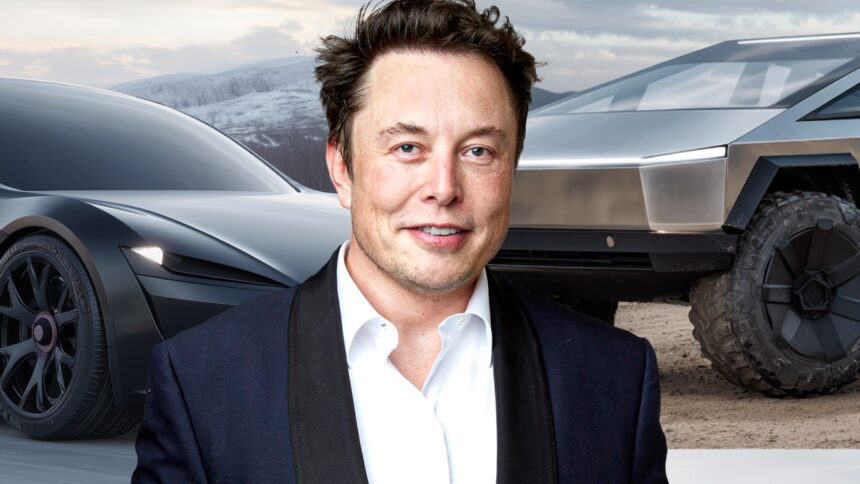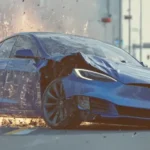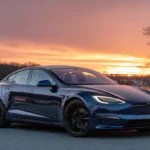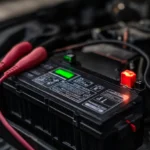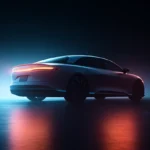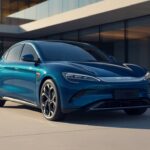Tesla’s 2025 Roadmap: Cybertruck Roll-Out, Model 2 Rumors & What’s Confirmed So Far is the phrase on every EV watcher’s lips right now, and for good reason. In a single 12-month window, the world’s most-talked-about automaker must scale its angular pickup, unveil a long-promised budget car, and defend its tech lead in charging and self-driving. Buckle up—2025 is set to redefine the company and the wider electric-vehicle market.
1. Executive Snapshot: Why 2025 Is Tesla’s Pivotal Year
Tesla has entered 2025 facing slowing global sales and intensifying competition from Chinese giants such as BYD. Yet the company’s own forecasts still call for 20 million annual vehicle capacity by 2030, a milestone tied to CEO Elon Musk’s “Master Plan 3.”
2. Cybertruck Production Timeline: From Hand-Built to High-Volume
After splashy first deliveries in late 2023, Cybertruck built barely 50,000 units through mid-2025. Tesla paused both Cybertruck and Model Y lines for routine maintenance during the July 4 week—its third shutdown in a year—to smooth the path toward higher daily output.
2.1 Q1–Q2 2025 Ramps & July 4 Maintenance Pause
3. Cybertruck Tech Upgrades Planned for 2025
4. The Affordable ‘Model 2’: Rumor Mill & Reality Checks
Wall Street often calls the still-unrevealed $25K car “Model 2,” but internal code-names include “Project Redwood.” In January 2025 Tesla reiterated that first units should emerge from existing lines “in the first half of the year,” but spy photos remain scarce and no unveil date is public.
4.1 Platform, Battery & Cost-Cut Strategies (Next-Gen Architecture)
Tesla’s next-gen platform merges giga-casting with structural packs and simplified wiring harnesses, halving manufacturing hours per vehicle. According to the Master Plan 3 roadmap, batteries will lean more heavily on lithium-iron-phosphate (LFP) cells to cut nickel and cobalt costs.
| Market | Target MSRP (after U.S. credit) | Earliest Deliveries |
| USA | ≈ $19,995 | Q4 2025 |
| Q2 2025 | 2,000 trucks | New giga-presses installed |
| EU | €24,000 (post-incentive) | Q1 2026 |
| China | ¥120,000 | Q1 2026 |
5. Manufacturing Footprint: Austin, Berlin & the Mexico Question
Tesla’s Austin gigafactory remains the flagship for Cybertruck and the forthcoming robotaxi. Berlin continues to supply Model Y to Europe but awaits line re-tooling for the next-gen platform.
5.1 Where Does Giga Mexico Stand Now?
Despite receiving local permits, Giga Mexico is effectively on pause until U.S. trade policy is clearer. Mexican officials pressed Musk for clarity in late 2024 after construction failed to start on schedule.
6. Software & Autonomy: FSD v12.6, Robotaxi Pilots, HW4 Roll-Out
Tesla began driverless robotaxi service in Austin with a handful of Model Y vehicles in June 2025. Industry experts see the pilot as a marketing coup but warn that scaling globally faces regulatory and technical hurdles.
7. Charging Infrastructure: V4 Superchargers & NACS Domination
Tesla’s next-generation V4 Supercharger cabinet will enter mass deployment in Q3 2025, supporting up to 500 kW per stall and integrated contactless payment—key for opening the network to Ford, GM, Hyundai and more.
7.1 500 kW Headlines & Third-Party Access
8. Sustainability & Supply-Chain Shifts: From 4680 to LFP
Tesla’s Corpus Christi lithium refinery starts up in late 2025, feeding both 4680 and LFP lines to slash the cost-per-kWh.
Key material moves:
- 4680 Scale-Up: 25 GWh/year target in Austin line alone.
- 48 V Harness: 40 percent wiring weight reduction, directly lowering copper demand.
- Rare-Earth-Free Drive Units: Prototype motors remove heavy reliance on neodymium magnets.
9. Financial & Market Outlook: Deliveries, Margins, Credits
Analysts at Wells Fargo caution that Tesla’s fundamentals look weaker than hoped, especially if zero-emission credit revenue declines.
| Metric | FY 2024 | FY 2025 Guidance |
| Global Deliveries | 1.82 M | 2.35 M (midpoint) |
| Gross Margin | 18% | 16-19 % (depends on Model 2 mix) |
| CapEx | $9.8 B | $12 B |
10. Key Challenges & Risks Heading into 2026
2025 is no ordinary year for Tesla. Successful Cybertruck scaling will show whether the brand can dominate beyond sedans and crossovers. The elusive “Model 2” could democratize EV ownership worldwide—if the cost-cutting platform hits promised targets. Meanwhile, advances in V4 charging and autonomy signal a company still betting big on vertical integration and software leadership.
For consumers, that means faster charging, more vehicle choices and likely price wars that benefit buyers. For investors, Tesla remains a high-beta swing: execution brilliance could restore explosive growth, whereas delays will invite fierce competition.
